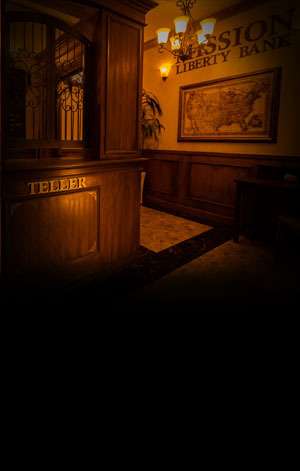What strategies work best in Anaheim escape rooms?
What strategies work best in Anaheim escape rooms?
Anaheim escape rooms offer immersive challenges that test problem-solving skills, teamwork, and creativity. Whether you’re taking on a spooky mission or a high-stakes bank heist, having a clear game plan can mean the difference between triumph and time running out. In this article, we explore proven strategies for maximizing your success in any anaheim escape room, drawing on insights from master puzzlers and first-timer feedback.
Understanding Anaheim Escape Rooms
Anaheim escape rooms range from atmospheric mysteries like Hydeout and Darkest Hours to action-packed scenarios such as Bank Heist and End of Days. Each room presents a unique environment and set of puzzles that require observation, logic, and collaboration. Familiarity with common puzzle types—pattern recognition, code breaking, physical manipulation—can give your team a head start. Before you begin, take a moment to scan the room, note hidden compartments, and identify potential puzzle stations. Recognizing the theme and flow of the story will help you anticipate the kinds of challenges you’re likely to face.
Importance of Effective Strategies
Jumping straight into an escape room without a plan can lead to confusion and wasted time. A structured approach—dividing responsibilities, establishing communication protocols, and adapting to new information—ensures that no clue is overlooked. Teams that follow a strategy tend to solve puzzles faster, maintain momentum, and avoid common pitfalls such as fixating on a single puzzle for too long.
Pre-Game Preparation
Even before you step into the room, you can boost your odds of success.
Stay hydrated and focused—mental clarity is key.
Agree on basic communication signals, like raising a hand to request help.
Discuss roles: designate someone to keep track of time, another to record discovered clues, and others to dive into puzzle solving.
Arriving early allows you to listen to the game master’s briefing, ask questions about rules or restrictions, and get a feel for the room’s tone.
Communication and Teamwork Strategies
Clear communication underpins every successful escape. Call out discoveries immediately: share every code fragment, key, or symbol. Use precise language—rather than saying “over here,” indicate “I found a key under the red cushion.” Divide and conquer by assigning subgroups to investigate different areas, then regroup every five or ten minutes to pool findings. Encourage quieter team members to speak up by asking open-ended questions like “What do you think this symbol means?” Celebrating small wins keeps morale high and energy levels up.
Puzzle-Solving Approaches
Approaching each puzzle methodically saves time:
First, observe all available components—locks, clues, props—before touching anything.
Second, hypothesize how clues might connect: could a sequence of numbers correspond to symbols found elsewhere?
Third, experiment safely—test combinations logically rather than randomly bracketing every possibility at once.
If you feel stuck, step back and look for alternate angles; sometimes a fresh perspective from a team member sparks the solution. Keep a running notes page or whiteboard of attempted codes to avoid repeating dead ends.
Role of Time Management
Time is the ultimate constraint. Most anaheim escape rooms allow sixty minutes, so pacing is crucial.
Set mini-deadlines: aim to complete two puzzles every fifteen minutes, for example.
If a puzzle proves too complex, flag it and move on, returning later with new clues.
Use any built-in hints judiciously—request them early enough that they still leave time to act on the solution.
A designated timekeeper should call out twenty-minute, ten-minute, and five-minute warnings to keep urgency high without panic setting in.
Adapting Strategies for Specific Games
Different room themes demand tailored tactics.
Hydeout
This stealth-style scenario rewards careful observation. Focus on identifying hidden panels and listening for mechanical cues. Work in pairs—one to inspect surfaces, another to handle props.
Darkest Hours
Darkness and limited visibility heighten tension. Equip yourselves early with flashlights if allowed, or use your phone’s light. Assign a navigator to map the room verbally and guide teammates.
Bank Heist
Speed and precision matter here. Start by locating all combination locks, then assign code-cracking to the sharpest pattern-recognizer. Maintain strict order when returning tools or keys to avoid misplacement.
End of Days
Time-travel or apocalypse themes often include layered puzzles. Break the team into “past” and “future” groups: one hunts for historical clues, the other for futuristic codes. Reconcile findings at regular intervals to piece together the overarching mystery.
Why Choose Us?
We specialize in crafting immersive experiences that blend narrative depth with inventive puzzles. Our game masters provide thorough briefings and support without giving away solutions, ensuring that each group enjoys the thrill of discovery. With carefully tested room designs and dynamic hint systems, we strike the perfect balance between challenge and fun. Whether you’re a seasoned enthusiast or a first-timer, our anaheim escape room adventures promise excitement, teamwork, and unforgettable memories.
Conclusion
Success in anaheim escape room challenges hinges on thoughtful preparation, clear communication, and adaptive strategies. By understanding the room’s theme, dividing responsibilities, and managing your time effectively, you’ll maximize your enjoyment and your chance of escape. Remember to stay flexible: if one approach stalls, pivot to another and keep the momentum going. With practice, these strategies become second nature, turning every game into an opportunity for triumph.
Frequently Asked Questions
Q: What strategies work best in Anaheim escape rooms?
A: The best strategies combine thorough pre-game preparation, clear communication, methodical puzzle solving, time management, and role assignment. Scanning the room, dividing tasks, and using mini-deadlines can dramatically improve success rates.
Q: How many hints can a team use without penalty?
A: Each room typically allows two or three hints. Using them early can save time, but teams should request hints only when truly stuck to make the most of their 60-minute session.
Q: Can beginners succeed without prior experience?
A: Absolutely. Following a basic strategy—assigning roles, staying communicative, and using hints wisely—levels the playing field for newcomers and seasoned players alike.
Q: What should teams do if they get stuck on a puzzle?
A: Flag the puzzle and move to another area. Rotating team members and revisiting flagged puzzles later with fresh insight often reveals overlooked clues.
Q: Are there age or skill requirements for Anaheim escape rooms?
A: Most rooms welcome players aged 12 and up, though younger children may join with adult supervision. No special skills are required—just a willingness to observe, think creatively, and collaborate.








